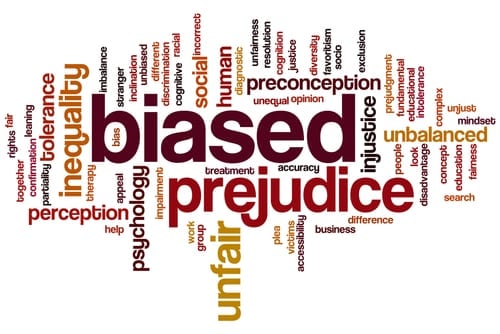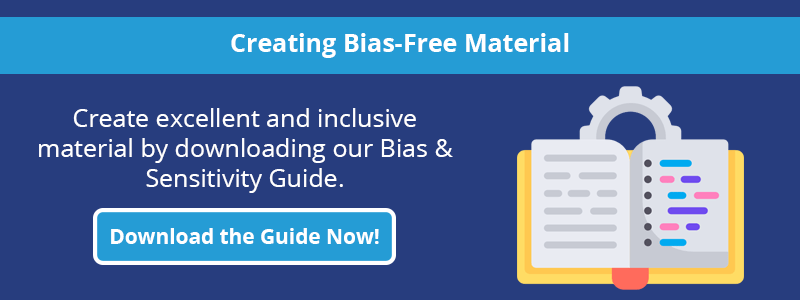It is impossible to be completely objective. Creating bias free content is challenging. Our experiences and beliefs create a lens through which we view the world. This lens can subconsciously create biases. A bias occurs when we favor one thing or one person over another for unfair reasons. When we create content for education, the material will be in the hands of learners. It is important during copyediting to be able to identify a bias and remove it. When educational content is written with biases, a learner is given an unfair advantage. We need to make the content inclusive for all learners. Below are several best practices to help you create bias free content.
Cultural Diversity
The inclusion of diversity in the language we use is critical. Text for students should use a variety of names from different cultural backgrounds such as Juan or Li. It is empowering for minority students to see their background represented in educational materials. When looking through your content, track the names and cultural practices that are written and detect if there needs to be more diversity.
Stereotypes
The idea that all members of a certain group act a certain way can make its way into educational content if an editor is not careful. When editing, look for any language that makes a generalization about a group of people. Language that portrays a minority individual in a low light while praising an individual in the majority needs editing. You can fix this by either removing information about the individual’s ethnicity, religion, or gender. If you include it, ensure that any flaws the individual has are not written in a way that makes them seem caused by their ethnicity, religion, or gender.
Gender Sensitivity
Imagine a student reading multiple word problems in which the female in the scenario is confused or is having trouble calculating. This perpetuates a message that girls are not as smart as boys. To prevent this kind of message, make sure that the content is using gender-neutral pronouns and names when possible. Instead of a “doctor performs his surgery,” it should be “a doctor performs their surgery.”
Age
According to a guide written at the University of Wisconsin Madison on creating bias-free communication, the age of a person should not be in the material unless it is pertinent to the message. For instance, a person simply being 46 is not important, but a child who wins a scholastic award against kids older than her should be mentioned. Ageism can sneak its way into content. Having an older person be forgetful in a scenario perpetuates the notion that all older people are forgetful.
Becoming trained at recognizing biases in educational content is no easy feat, yet it’s an important task. Our learners deserve the best chance at being successful. This begins with receiving content that is inclusive and bias free.
Sources:
https://academicaffairs.ucsd.edu/_files/aps/adeo/Article_Guide_to_Bias-Free_Communications.pdf





